Matthew Langston’s discovery of the streetcar rails and cobblestones uncovered during the recent repaving of Big Bend is a good excuse to rerun some of the photographs of the streetcars that once glided over them.
[Editor: see a map of streetcar routes in St. Louis]
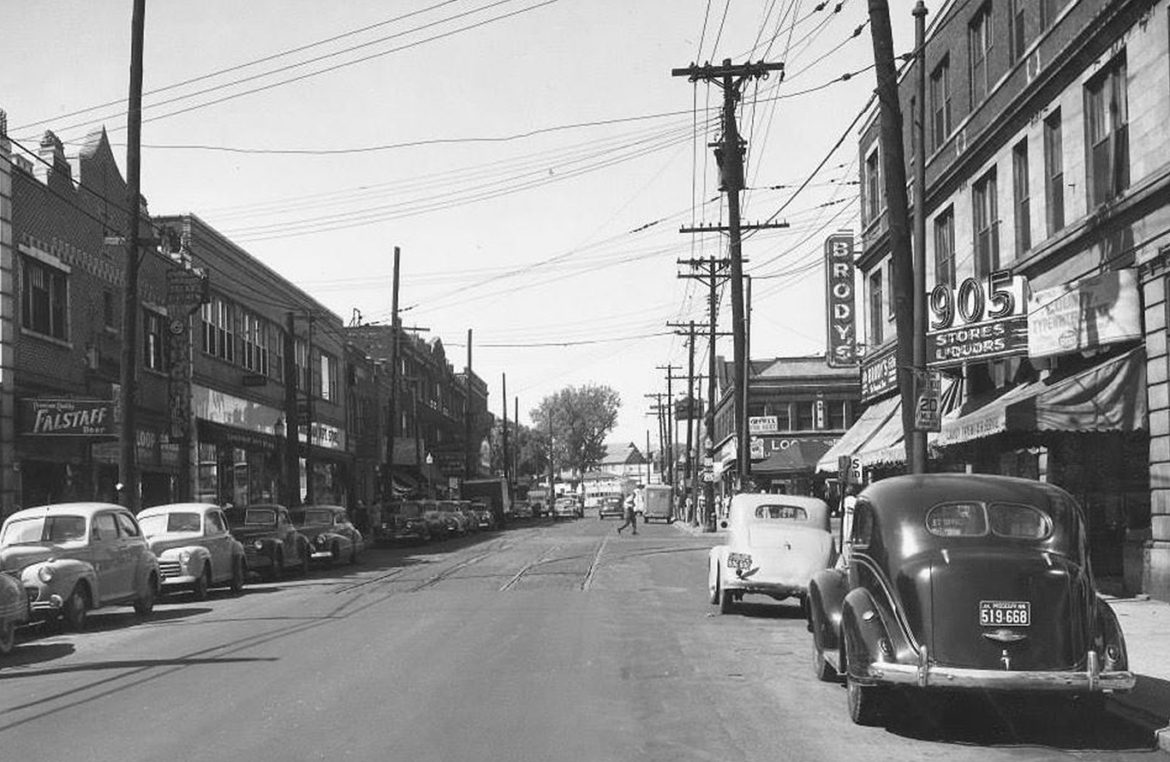
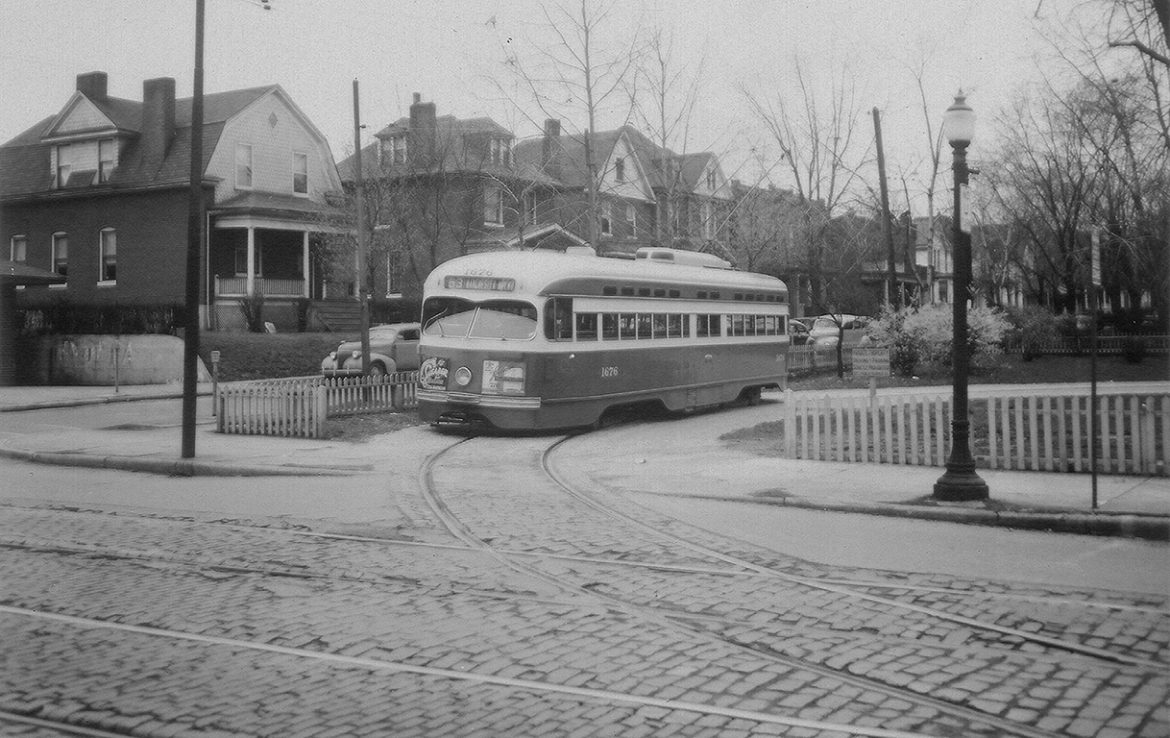

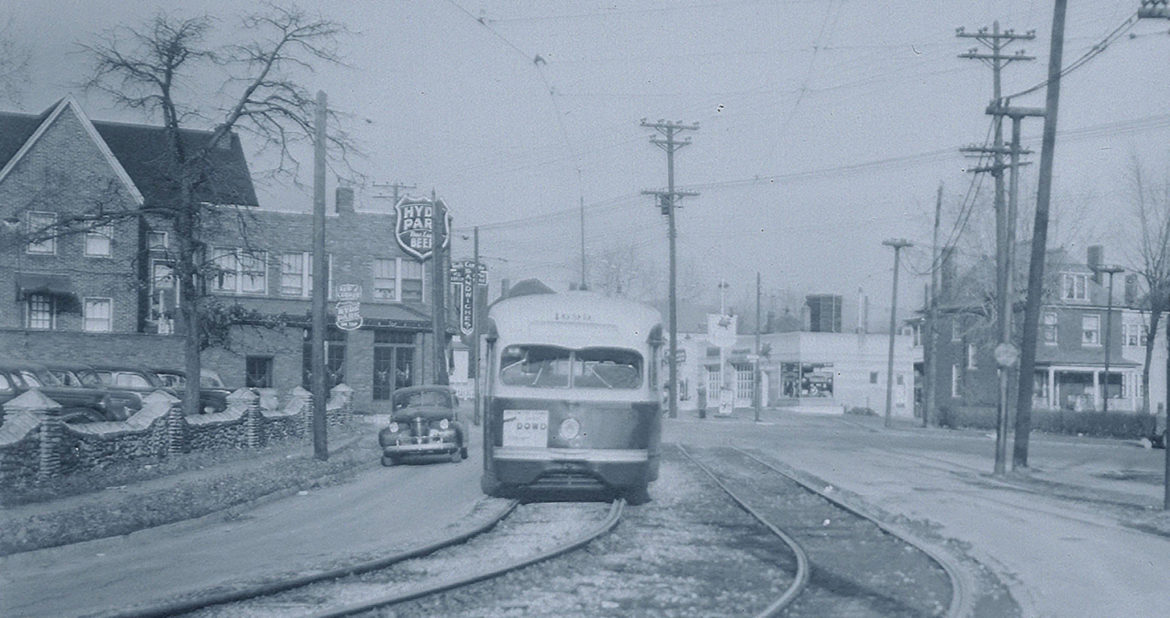
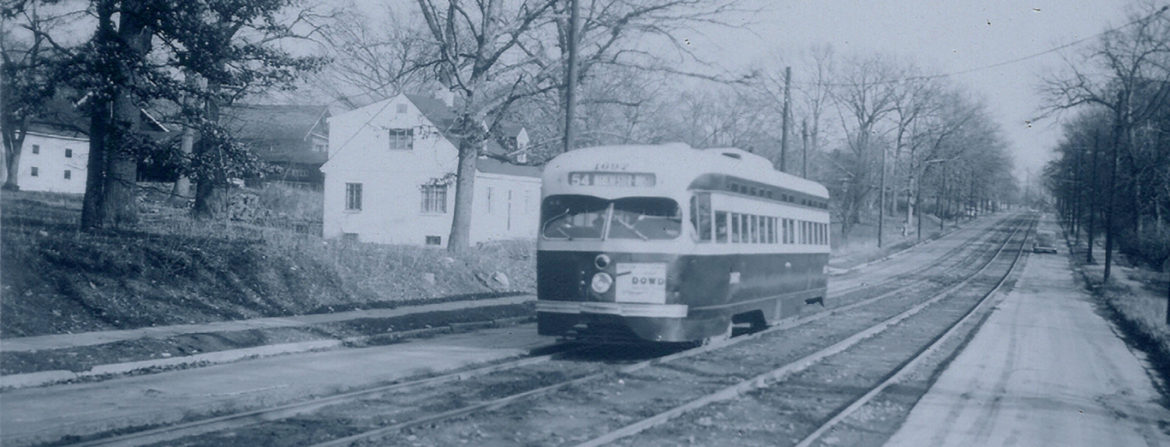
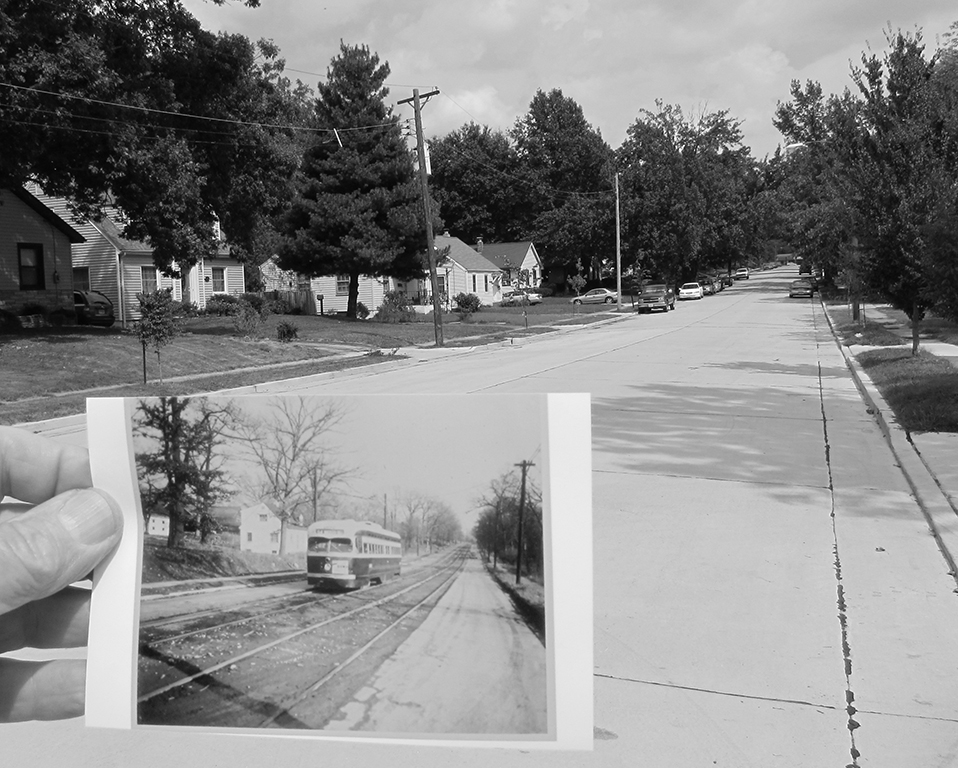
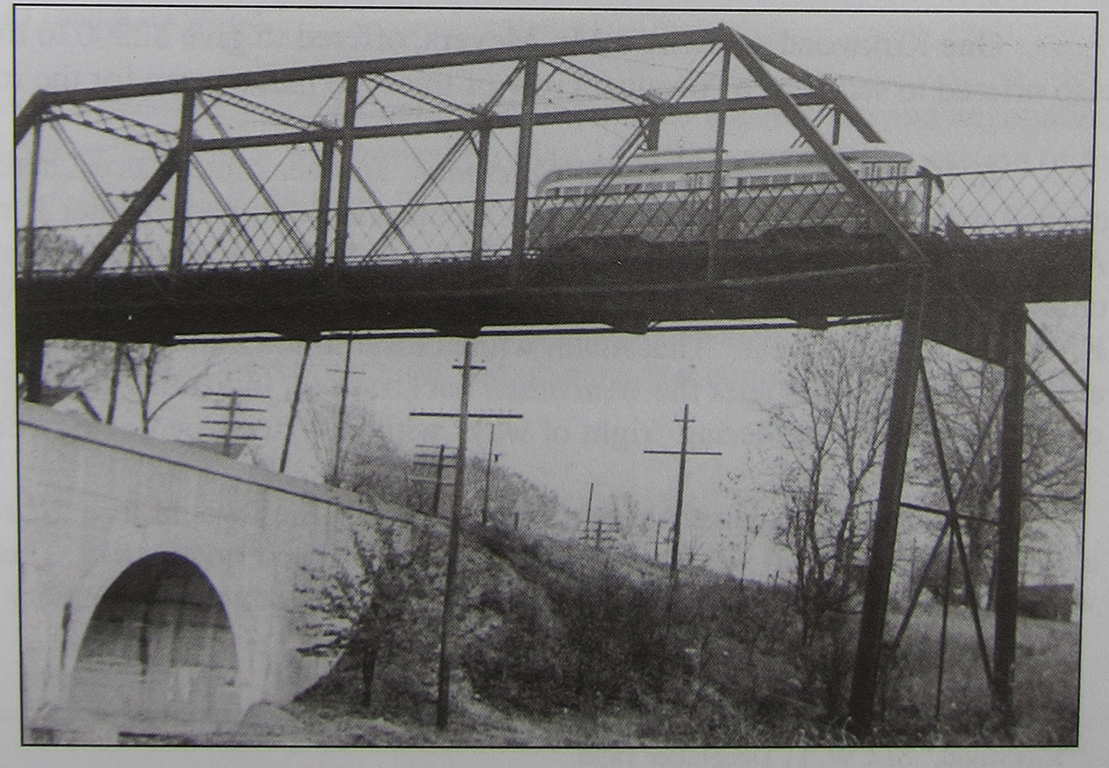



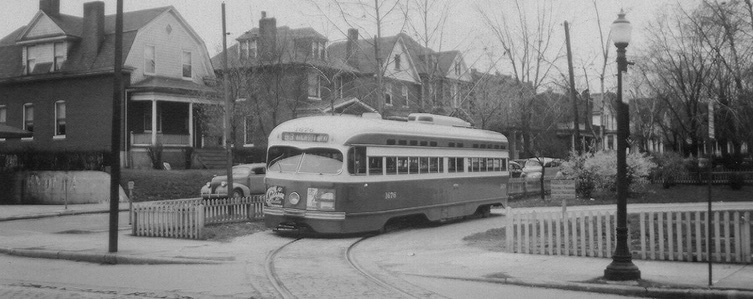
Funny now how many cities, including STL, are spending thousands to bring them back. Having lived near San Francisco for a number of years they are a grest way to get around.
They sure are, Dave. I expect you’re referring to the Bay Area Rapid Transit (BART) but what I remember most were the cable cars. To any of my readers who have never ridden them, you definitely should. What an experience. They are driven by a “gripman” so called because he operates the levers that grip a large cable that is moving just below street level and provides the power to haul those carloads of people up those very steep streets. In the 1970’s when the car came to the end of the line it wound up on a giant turntable. When it stopped all of the passengers (most of them anyway) jumped off and spun the car around by hand so it could reverse its course. What fun! Because of a few accidents they don’t allow the passengers to help any longer. That’s too bad. Surely a few missing fingers and toes shouldn’t stand in the way of an experience like that. Thanks for your comments, Dave.
About conspiracy theories:
Yes, there was a trial concerning “National City Lines,” a consortium run by GM, Firestone and Standard Oil of Ohio. However, the basis of this was that they were trying to monopolize streetcars, not run them into the ground.
Motorists objected to the large vehicles on city streets, and especially the rough roads associated with the rails (as we see in the U. City Loop today).
I remember riding from downtown up Pershing, over Central and around the Court House in Clayton (vaguely). That line ended because the City condemned the center part of it, using eminent domain to build the Forest Park Expressway where the streetcars once ran.
People wanted to travel where they wanted when they wanted; I don’t think Big Business had to conspire to make cars finish off streetcars . . . . however, in many cases the death blow to lines was delivered by the government—presumably at the request of voters–even as Big Business tried to run the streetcar lines.
Charles, I was not familiar with the trial you mentioned in your first paragraph so I read about it in an article on Wikipedia titled, “General Motors streetcar conspiracy”. I’d have to disagree with your second statement. It seems to me the companies involved were definitely trying to replace the streetcars with buses for a variety of reasons. Perhaps the main one being that the electric car lines were no longer profitable.
You mention rough roads in your second paragraph. That certainly would have been a factor that we probably would not notice today. The rails themselves and the tires on the automobiles have evolved to the point where I don’t think rough riding would be an issue now. Take a drive down Delmar. It’s not bad.
It is interesting to note that the MetroLink runs down the Forest Park Expressway once again.
You write, “People wanted to travel where they wanted when they wanted.” That’s right. It’s still that way.
Thank you very much for your very interesting and informative comments.
I don’t know if this is specifically true of St. Louis, but I’ve read that the auto manufacturers were instrumental in shutting down streetcar service in many cities post-WWII to the benefit of their products. I know STL still has public transit, but how great would it be to have those lines going not around but through where people live and work?
Well jjhochunk, I don’t know if the auto manufacturers had a role in ending the streetcar era. I would not put it past them. There were other factors that certainly played a part. Efficient public transportation needs population density which was lacking in the suburbs. As the country became more affluent after WWII more folks had one and eventually two or three automobiles per family which gave them a great deal of freedom. We’re nostalgic for the streetcar era but the truth is in a widely spread out area like St. Louis county it’s difficult to make it worth the expense of the building, running and maintaining of the lines.
I agree that the urban sprawl after WWII is the true culprit in the demise of public transportation. The factors that most contributed to that sprawl are emotions and thought processes which exsist and have since the beginning of our American experience. Arguably the American dream killed the streetcars….obviously with the help of corporate pressure, advertisers, and government muddling. In a big way, the loss of street cars is just natural progression. When was the last time you booked passage on a river, or better a canal, boat?
Hey Jeff, Nothing lasts forever, I suppose. I remember reading that the wood burning steamboat era on the Mississippi (and I guess elsewhere) lasted about 60 years. Then it was over…forever. Replaced by the next generation of riverboats. The streetcar era in Maplewood lasted 53 years. It has now been 68 years since it ended. True we do have light rail and have had for sometime now but it doesn’t seem the same. It doesn’t connect with our business district or residential areas the way the streetcars used to. What I wonder and haven’t read any speculation on is what effect will driverless vehicles have on public transportation? I suspect they will have an effect and it won’t be positive. Thanks for your comment Good to hear from you.
So if I understand your caption, Doug, that third picture above is looking north along Big Bend, from the corner of Big Bend and Flora. So is that Claude’s on the right hand side of the pic, the light-colored building with the partial glass-block window?
Thanks!
Hey Steve, the building directly behind the streetcar is the Frame of Mind/ Parison Bakery building at the corner of Big Bend and Maple. The building with the glass block window is adjacent to Claude’s and just north. I don’t know who is in it these days. I’ll have to check next time I go by.
I think it is a company that makes custom mailboxes out of bricks.
Thanks, Doug! And yes, as Mike says, that is a brick mailbox company right to the north of what is now Claude’s.
Seeing these photos makes and all of the old buildings torn down – very sad…..
I couldn’t agree more, m. It is sad.
The streetcar right-of-way south of the Edgewood Bridge can still be followed in several places in northeast Webster Groves. Ann Morris describes them in her walking tour brochure for that area, which I think you can still pick up for free in the display case on the east side of Webster’s City Hall. Nowadays those features seem inexplicable if you don’t know that the bridge was once there.
Esley Hamilton
Thank you, Esley. That is some interesting info. I might add that Summit is the street in Webster that the electric cars ran down. One can notice today that it is level (like railroad tracks are) compared to the terrain on either side of it.
This is awesome. I love seeing these old photos of our town. Thanks for sharing!
Yes indeed! How fortunate we are to have such a dedicated historian in our midst!
Thank you kindly, Phyllis. What a nice thing to say.
They are awesome. You are welcome, GLowe.
My old neighborhood. I grew up on Flora between Big Bend and Sutton from ’44-’62 when I went in the Army.
I loved the streetcars. Also loved ice cream from Ted’s Corner.
Good times.
Thanks for your recollection, Don. I’d love to get more photos of Ted’s Corner.
Super cool!!! Love this stuff.
I agree, Shelley. Thank you for taking the time to weigh in.